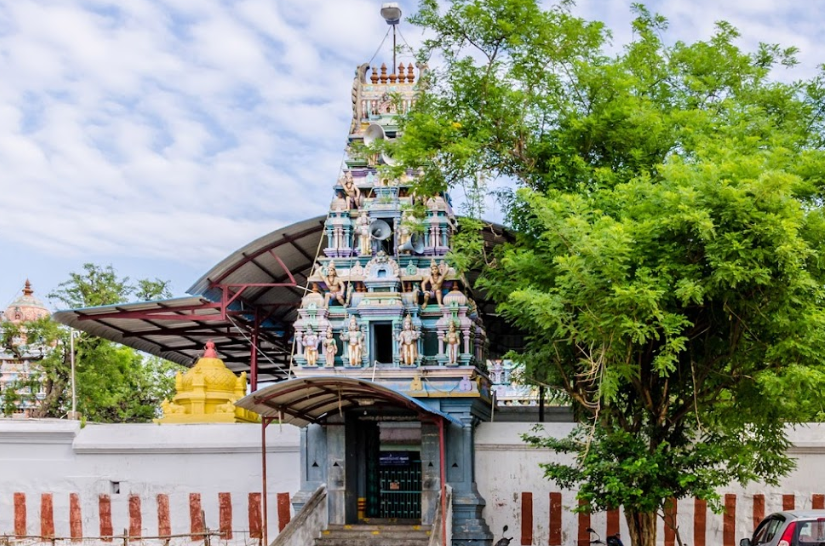The commanders of the demon king Vanasura, Onan and Kanthan, were stationed as security guards at his fort near a place called Puzhal. Onan discovered a Swayambhu Linga in the area and, moved by devotion, performed severe penance, using his blood for abishekam (ritual bathing) and securing numerous boons from Lord Shiva. Similarly, Kanthan found another Linga and was blessed with divine boons as a reward for his unwavering devotion. A third demon, Jalandeswaran, also found a Linga and received many blessings from the Lord.
The saint Sundarar visited this place and discovered the three Lingas buried in an open space. He praised the demons for their deep devotion to Lord Shiva. To show the world that even demons were staunch Shiva devotees, and to protect the three Lingas, Sundarar composed hymns in praise of the Lord. Seeking funds to build a temple, Sundarar requested Lord Shiva's help. Initially, the Lord delayed His response to hear more of the saint's hymns, but eventually, He showed Sundarar a tamarind tree and disappeared. When Sundarar looked at the tree, its fruits turned to gold. Using the gold, Sundarar built the temple to honor the three Swayambu Shiva Lingas.
Administration History :
The Oneswarar Temple has a long history of administration, with initial contributions from the Pallavas and later renovations by the Vijayanagara rulers. Currently, the temple is maintained under the management of the Hindu Religious and Charitable Endowments Department of Tamil Nadu, ensuring its preservation and daily worship activities.
